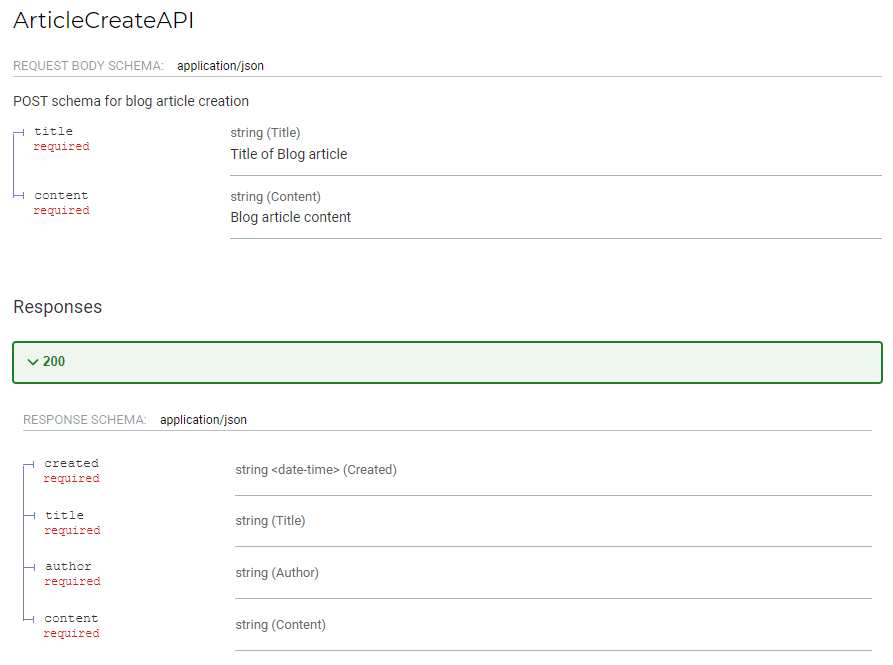Automated OpenAPI documentation generator for Django. Djagger provides you with a clean and straightforward way to generate a comprehensive API documentation of your Django project by utilizing pydantic to create schema objects for your views.
Djagger is designed to be:
🧾 Comprehensive - Every aspect of your API should be document-able straight from your views, to the full extent of the OpenAPi 3.0 specification.
👐 Unintrusive - Integrate easily with your existing Django project. Djagger can document vanilla Django views (function-based and class-based views), as well as any Django REST framework views. As long as you are using Django's default URL routing, you are good to go. You do not need to redesign your APIs for better documentation.
🍭 Easy - Djagger uses pure, unadulterated pydantic models to generate schemas. If you have used pydantic, there is no learning curve. If you have not heard of pydantic, it is a powerful data validation library that is pretty straightforward to pickup (like dataclasses). Check it out here. Either way, documenting your APIs will feel less like a chore.
Install using pip
pip install djaggerAdd djagger to your INSTALLED_APPS setting in your Django project like this:
INSTALLED_APPS = [
...
'djagger',
]Include the djagger URLconf in your project urls.py like this if you want to use the built-in document views.
urlpatterns = [
...
path('djagger/', include('djagger.urls')),
]Note
- To see the generated documentation, use the route /djagger/api/docs. Djagger uses Redoc as the default client generator.
- To get the generated JSON schema file, use the route /djagger/schema.json.
from rest_framework.views import APIView
from rest_framework.response import Response
from pydantic import BaseModel as Schema
import datetime
class ArticleDetailSchema(Schema):
created : datetime.datetime
title : str
author : str
content : str
class RandomArticleAPI(APIView):
"""Return a random article from the Blog"""
response_schema = ArticleDetailSchema
def get(self, request):
...
return Response({})Generated documentation

from rest_framework.views import APIView
from rest_framework.response import Response
from pydantic import BaseModel as Schema, Field
import datetime
class ArticleDetailSchema(Schema):
created : datetime.datetime
title : str
author : str
content : str
class ArticleCreateSchema(Schema):
"""POST schema for blog article creation"""
title : str = Field(description="Title of Blog article")
content : str = Field(description="Blog article content")
class ArticleCreateAPI(APIView):
request_schema = ArticleCreateSchema
response_schema = ArticleDetailSchema
def post(self, request):
...
return Response({})Generated documentation

For more involved examples, check out the example project and the API documentation generated from that project.
- Read the full documentation for Djagger: https://djagger-docs.netlify.app
- This project is in continuous development. If you have any questions or would like to contribute, please email [email protected]
- If you want to support this project, do give it a ⭐ on github!